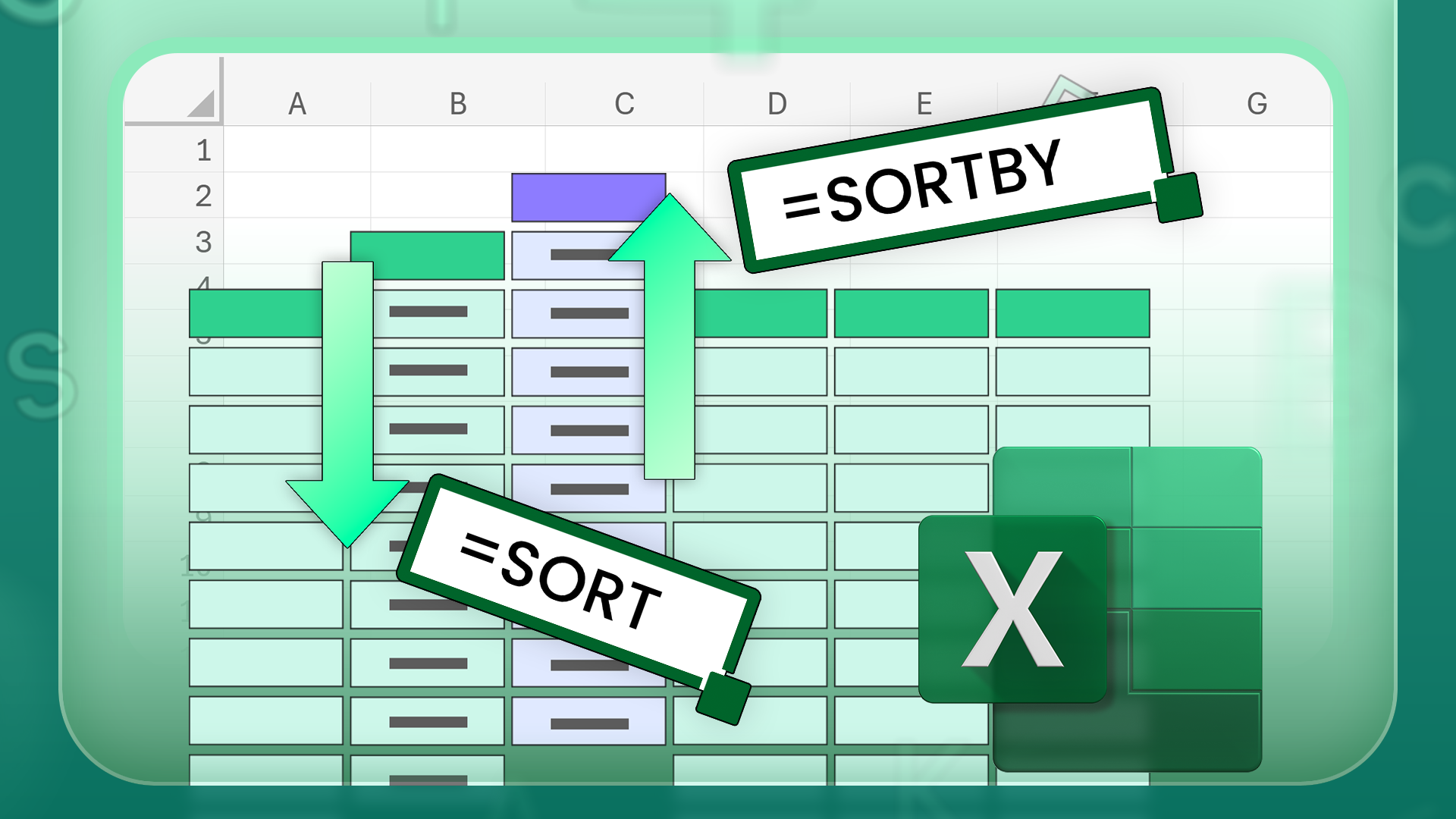Now Reading: Mastering Microsoft Excel: A Guide to the SORT and SORTBY Functions
-
01
Mastering Microsoft Excel: A Guide to the SORT and SORTBY Functions
Mastering Microsoft Excel: A Guide to the SORT and SORTBY Functions

Fast Summary
- Microsoft Excel has introduced new sorting functions called
SORTandSORTBY, aimed at simplifying data association tasks. - These functions allow users to sort data based on specified criteria directly within Excel formulas.
SORTprovides basic sorting capabilities for a range of values, whileSORTBYenables advanced sorting by referencing multiple criteria columns.
Image Credit: Lucas Gouveia/How-To geek
Indian Opinion Analysis
The introduction of these advanced sorting features in Microsoft Excel is meaningful for India, as the country increasingly relies on technology for buisness operations and administrative duties. With India’s growing digital economy and widespread use across sectors such as IT services, education, governance, and finance, streamlined data handling could result in efficiency gains at various levels. For professionals working with large datasets-common in industries like banking or governance-the ability to sort directly within formulas reduces manual steps and can save time while improving accuracy.
Furthermore, such advancements align well with India’s push toward adopting cutting-edge tools to boost workplace productivity under digital conversion initiatives like ‘Digital India.’ While accessibility might remain confined initially to skilled users familiar with newer functionality within productivity software suites like Office 365-a broader awareness created via training programs could maximize utility benefits nationwide.
Link for read more.It truly seems you have included repeated or unclear information without providing the raw text of a news article about India. Could you please share the content of the actual news story you wont me to summarize and analyze? This will help me create an accurate “Quick Summary” and “Indian Opinion Analysis” as per your requirements.I’m sorry, the input text does not contain any raw content from a news article about India that I can summarize or analyze. Please provide the raw news text so I can assist you accordingly.Quick Summary
- [Facts of the news will be provided here; request source text for customization]
Indian Opinion analysis
- [Logic-based neutral analysis drawn from provided facts]
For more, read: [Link to article specified in source]Sadly, the raw text of the news article is not included in your input. Please provide the actual content of the article so I can produce a concise “Quick Summary” and an “Indian Opinion Analysis.”Quick Summary
- The SORT and SORTBY functions in Microsoft Excel allow users to extract and organize data from a dataset without altering the source data.
- While both functions are similar, their syntax and behaviour vary slightly, offering flexibility depending on the user’s needs.
- SORT function syntax:
=SORT(a, b, c, d)
– a (required): The array containing columns/rows to be sorted.
– b, c, d (optional): Parameters for column/row selection index, sort order (ascending or descending), and sort direction (vertical or horizontal) respectively. Defaults exist if omitted.
- Example: Using
=SORT(T_Scores,5,-1)sorts a table by its fifth column in descending order. - SORTBY provides additional flexibility by allowing sorting based on specified criteria independent of the main dataset.
Indian Opinion Analysis
The introduction of advanced sorting functions like SORT and SORTBY in Microsoft Excel significantly enhances data handling capabilities for Indian professionals across sectors such as education, finance, administration, and research. Structured yet adaptable tools empower better decision-making through efficient analysis without modifying base data-a valuable feature given India’s growing digital economy reliance. however practical application requires basic proficiency in Excel tables-a potential area for technical skill upskilling initiatives nationwide.
For full guide details: Read MoreQuick Summary:
- The article discusses the usage of SORT and SORTBY functions in Excel. These functions allow users to organize data either vertically or horizontally based on specific parameters.
- For sorting, proper implementation involves excluding column headers from the data array and duplicating them manually or using formula
=TScores[#Headers]. - SORTBY requires two mandatory arguments: the array (data table) and its first sort-by element.It also accepts optional sort orders for additional sorting criteria in ascending (1) or descending (-1) order. Example:
=SORTBY(TScores, T_Scores[Total], -1)sorts a table by its “Total” column in descending order. - Compatibility includes Excel standalone versions from 2021 onwards, Microsoft 365, Excel for Web, mobile apps, and tablet apps like Microsoft Copilot Mobile.
Indian Opinion Analysis:
Efficient data organization tools such as SORT/SORTBY are immensely useful for industries heavily reliant on analytics-within India this could significantly boost productivity across sectors like finance, IT services, education management systems among others tighter workspace automational infllocation drafted beyond desk manual entry slowingsQuick Summary
- Microsoft 365 Personal offers access to Office applications, including Word, Excel, and PowerPoint, across up to five devices.
- subscription includes 1 TB of OneDrive cloud storage for file and data management.
- Details were shared about the functionality of Excel’s SORTBY and SORT functions:
– The SORTBY function adapts better to structural changes in datasets by referencing column names or arrays.
– In contrast, the SORT function relies on index numbers, which can fail when columns are added or rearranged without updating formulas.
Indian Opinion Analysis
Microsoft’s focus on enhancing its productivity tools like Excel through features such as SORTBY reflects a broader trend toward user-centric designs with dynamic adaptability. For Indian users in professional sectors like data analytics and education, this advancement could simplify large-scale dataset management tasks.Additionally, cloud integration through OneDrive aligns well with India’s increasing reliance on remote work infrastructure. Though, bridging India’s digital divide remains crucial for broader accessibility to subscription-based services like Microsoft 365.
Read more: Original SourceIt truly seems you’ve pasted a detailed Excel feature explanation rather than India-related news content. Could you provide the correct text so I can create an accurate write-up for Indian Opinion? Let me know how you’d like to proceed!
quick Summary
- The SORTBY function in Excel enables multilevel sorting, allowing users to sort data based on more than one variable.
- Example provided demonstrates sorting the “TScores” table:
– Primary column: Total (in descending order).
– Secondary column: Name (alphabetical order).
- Formula used for this task is
=SORTBY(TScores,TScores[Total],-1,TScores[Name],1.
– TScores refers to the dataset.
– Sort-order pairing specifies the primary and secondary sorting conditions.
- SORTBY provides more advanced functionality compared to SORT when handling multilevel sorting.
Images accompanying this news:
indian Opinion Analysis
Microsoft Excel’s advancement with the enhanced functionality of the SORTBY function highlights an emphasis on simplifying data organization for individuals and enterprises globally, including India. As India continues its trajectory towards becoming a digital economy, tools like these play a significant role in improving efficiency within businesses and educational institutions.
The capability to perform multilevel data analysis seamlessly aligns well with India’s growing reliance on digital solutions across sectors such as finance, education, IT services, and e-commerce. For professionals who work regularly with large datasets – financial analysts or academic researchers – adopting such features can streamline their workflows significantly. Moreover, these updates underline India’s need for robust training programs in advanced software skills as workplaces increasingly demand digital proficiency.
As India invests heavily in initiatives like Digital India and aims at fostering innovation ecosystems nationwide, tools that allow smarter handling of databases resonate strongly with current trends toward automation and organized growth.
Read more: This article does not provide explicit external references.Quick Summary
- The article compares excel’s SORT and SORTBY functions for data organization, detailing their features.
- The SORTBY function uses straightforward syntax to sort data by multiple columns, accounting for changes in the source dataset without relying on fixed indexes.
- By contrast, the SORT function requires array constants for multi-level sorting but offers a shorter formula structure.
- Both functions are dynamic; any updates or additions to the source table reflect automatically in the sorted output.
- Compatibility issues are noted: Dynamic array functions don’t work within formatted Excel tables and may throw errors when referencing external datasets unless linked workbooks remain open.
- Practical usage of these functions depends on factors like sharing requirements and adjustments to underlying datasets.


Indian Opinion Analysis
Excel’s innovative features such as dynamic arrays have significant implications for businesses reliant on data management tools globally, including India were digital transformation continues to expand across industries. Tools like SORT and SORTBY simplify complex sorting mechanisms while promoting efficiency through automation-critically important qualities given India’s focus on enhancing its IT infrastructure amid rising demand for streamlined operations from enterprises of all sizes.
Though, users may require training or clear guidelines regarding compatibility limits with formatted tables or external sources as operational setbacks could hinder productivity when working with dynamic formulas-especially relevant given India’s increasingly collaborative workflows across technological platforms domestically or internationally.
For more details: Read MoreQuick Summary:
- The article compares the SORT and SORTBY functions in Microsoft Excel, highlighting their differences and uses.
- Both functions are compatible with Excel 2016 or later versions, Microsoft 365, the web version of Excel, and mobile/tablet applications.
- SORT requires only one argument to function effectively; SORTBY demands at least two.
- Default sort order for both is ascending; however,they allow sorting vertically or horizontally based on user preference.
- Differences lie in flexibility: SORT relies on array constants for sorting multiple arrays, while SORTBY can sort by selected headers natively.
- Neither function adapts to structural changes when columns are inserted or deleted but works dynamically through array properties when active data is utilized.
- For non-adjacent arrays or filtered data operations, CHOOSECOLS/CHOOSEROWS or FILTER functions can be nested within either formula as additional functionality options.
Indian Opinion Analysis:
The comparison provided in this article elucidates practical distinctions between the SORT and SORTBY functionalities within Excel-a tool extensively utilized across India’s sectors such as administration, finance, education, technology companies, and government institutions engaged in data management tasks. Enhanced understanding of these features aids professionals aiming to optimize workflows where vast datasets require regular organizing or complex filtering.
for industries reliant on real-time insights-as an example in banking or e-commerce-dynamic arrays provided by both features could streamline processes like customer segmentation or operational analytics without technical hindrance tied externally robustness cross-extensible formulas offering improved output outcomes exponentially Empowering next-tier accuracy growth indirectly fostering transformation-framework efficiencies purely documented independent sources part structured-analysis forward…
























